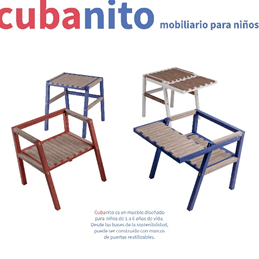Designe, a restorative discipline
##plugins.themes.bootstrap3.article.main##
Abstract
Objective: To approach design as a restorative discipline, and in a responsible way.
Method: Bases on a broad search for information and references, it was possible to make a detailed analysis of the problems that today affect the environment and how they can be solved through design.
Main results: The value of products, materials and resources must be maintained in the economy for as long as possible, minimizing the generation of waste, and closing loops or economic and ecological flows of resources.
Conclusions: Design today can be considered the main tool for the transformation towards a sustainable future and as designers we must obtain a holistic view of the problems to be solved that redirect the way of thinking and applying design.
##plugins.themes.bootstrap3.article.details##

This work is licensed under a Creative Commons Attribution-NonCommercial-ShareAlike 4.0 International License.
- Attribution — You must give appropriate credit , provide a link to the license, and indicate if changes were made . You may do so in any reasonable manner, but not in any way that suggests the licensor endorses you or your use.
- NonCommercial — You may not use the material for commercial purposes .
- No additional restrictions — You may not apply legal terms or technological measures that legally restrict others from doing anything the license permits.
- ShareAlike — If you remix, transform, or build upon the material, you must distribute your contribution under the same license as the original. NOTE: This point applies to numbers 1 to 20 of the magazine with the previous CC-BY-NC-SA 4.0 license. Does not apply to the new CC BY-NC 4.0 license from Volume 11, Number. 21 (2024).
References
Badiola, N. (s. f.). 3 consejos para hacer tu web más sostenible. https://nbadiola.com/consejos-hacer-web-mas-sostenible/
El impacto de los procesos industriales en el medio ambiente. Ceupe Magazine. Consultado el 11 de mayo de 2023. https://www.ceupe.com/blog/impacto-procesos-industriales-medio-ambiente.html
La Prehistoria. Edad de Piedra y Edad de los Meta-les. (2022, 20 diciembre). Sobreprehistoria, by Ten-denzias. https://sobrehistoria.com/prehistoria/
Márquez, A. (2021, 20 febrero). Consumismo: qué es, tipos, ejemplos y consecuencias. Ecología ver-de. https://www.ecologiaverde.com/consumismo-que-es-tipos-ejemplos-y-consecuencias-3239.html
Miranda Murillo, L.M. (2013). Cultura ambiental: un estudio desde las dimensiones de valor, creen-cias, actitudes y comportamientos ambientales. Recuperado de: https://dialnet.unirioja.es/servlet/articulo?codigo=5012134.
Mizar Moreno, D. y Munzón Pastran, C. (2017). Im-pacto ambiental de los procesos de producción. Una revisión de su evolución y tendencias, Revista I+D en TIC, vol 8, n° 1, pp.15-20. Recuperado de: https://revistas.unisimon.edu.co/index.php/identic/issue/view/203
Programa de las Naciones Unidas para el Medio Ambiente (s. f.). Revista TUNZA. https://www.unep.org/publications-data
https://www.iberdrola.com/sostenibilidad/obsolescencia-programada
Serbusa (2012, 3 de diciembre). Ecomáquina-herramientas: diseño ecológico en la industria. https://www.serbusa.net/2012/12/03/ecomaquinas-herramienta-ecodiseno-en-el-sector-de-maquina-herramienta/

























